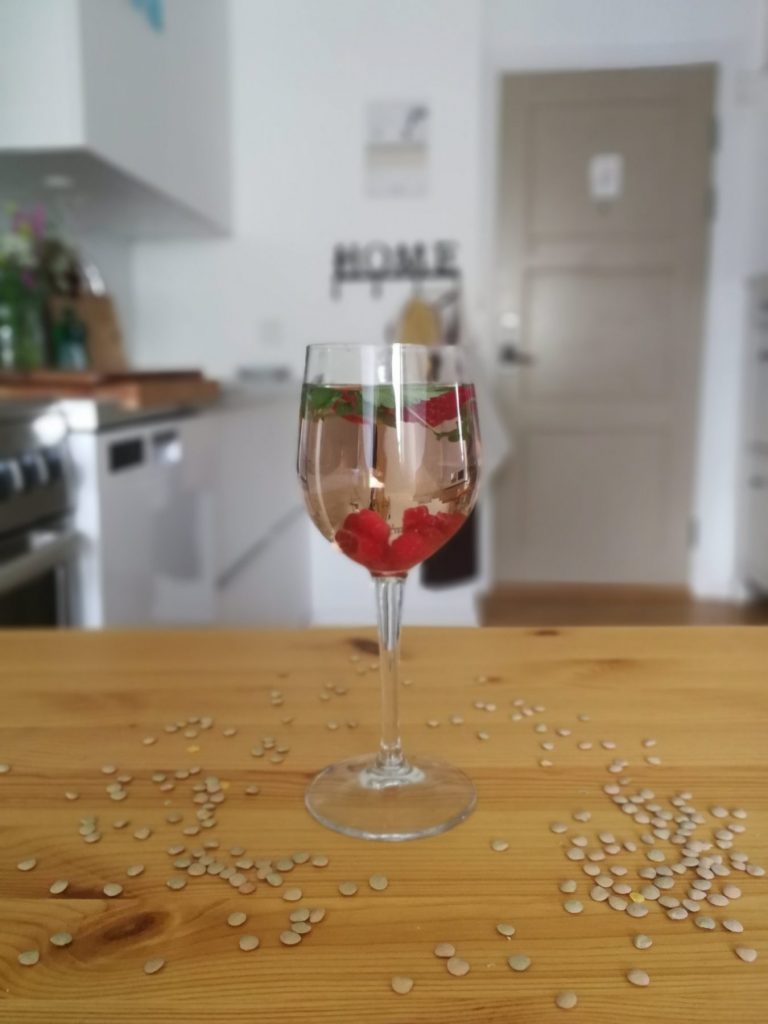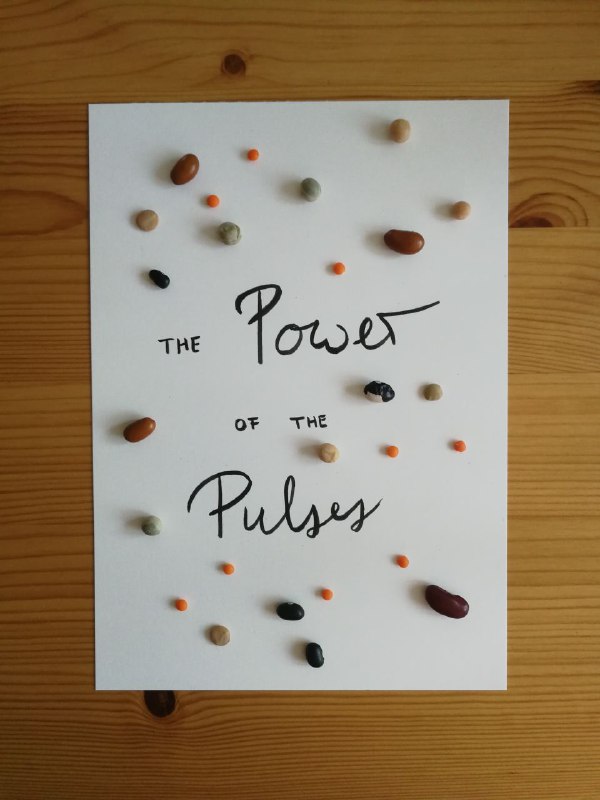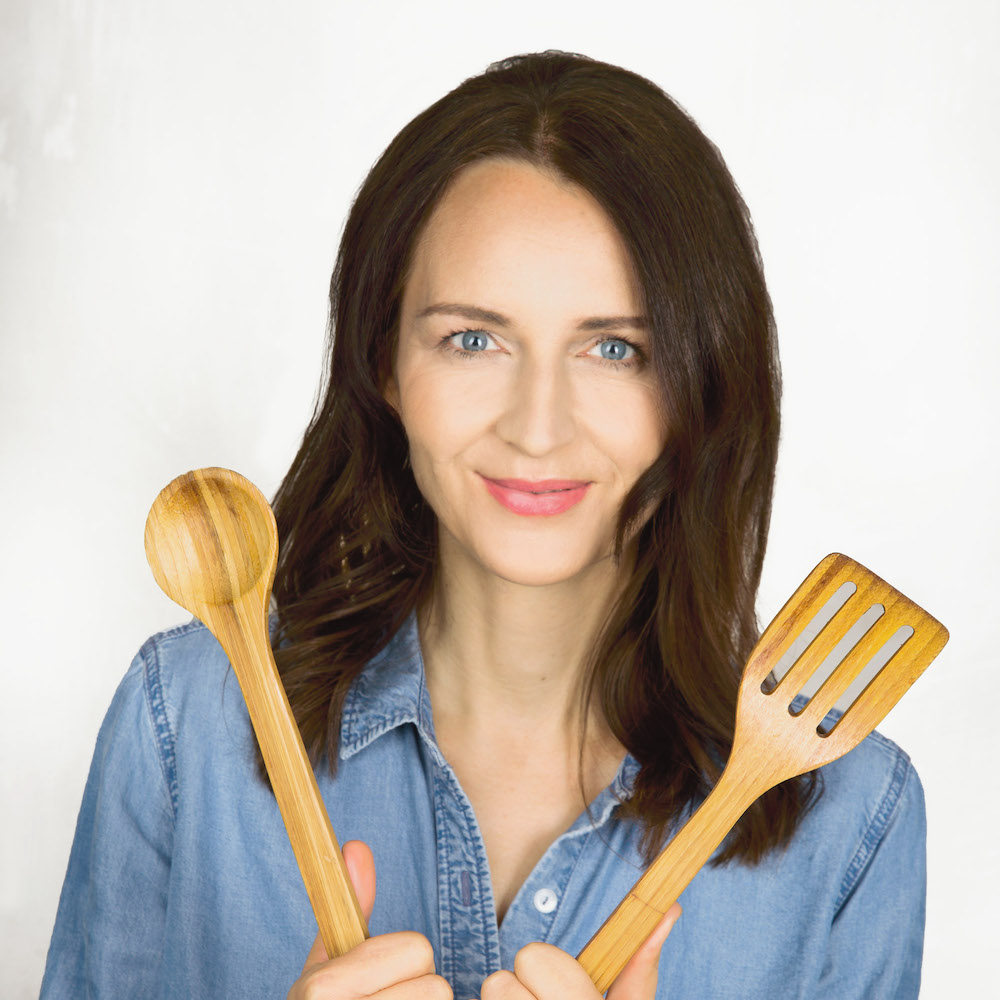On July 14th, though it was already hot in most of our regions, Claudia from heldenküche fired up our kitchens! She brought in her good mood and energy right from the moment she welcomed the participants, from all over the world – Germany, South Korea, the US, Croatia and further countries -, greeting them with a smile and a refreshing welcome drink. What a diverse encounter in our kitchens it was!
We had the pleasure to make a toast to the power of pulses.



Tips and tricks
While waiting for the lentils to cook, Cecilia Antoni, longtime bean expert, and food bloggerin at bean.beat shared some insightful tips for cooking lentils.
- Tip#1: For a salad, you don’t want to use too much water to cook the lentils. The lentils should be covered and a good rule of thumb is at least 2,5 times water. Check during the cooking process, and add water if you notice it’s not enough.
- Tip#2: Salt: always use salt with lentils, though not too much. First boil the water until high, after the water boils, lower the heat, then put in the salt.
- Tip#3: You can cook with seaweed like Kombu seaweed instead of salt!
- Tip#4: Put chopsticks between the pot and the lid so the steam can go out. You can also use a spatula.
- Tip#5: For the busybees, you can cook a big batch of legumes at a time, so you don’t need to soak them each time. You can boil 1 kg for example, then make small batches out of it and put them in the freezer.
Check out the recording for more details.
Have you already seen the Global Bean sheet “Cooking Pulses from Dry Seeds“? Discover there many more tips about how to prepare various types of legumes.
More than a cooking course: “Cooking with concept”
After setting the lentils on the stove with Cecilia’s tips, Claudia walked the participants through every step of a baseline colourful lentil salad recipe – available in the Global Bean lentil recipe collection.
However, the goal of the “Concept versus recipe” approach is to develop an understanding of the ingredients and their combinations, according to your taste, your body, your region… In short, the message was: The way you do it, is the right way for you!
An example:
Dressing: 2 units of oil + 1 unit of vinegar + sweet element + salty element + binding element (like mustard for example).
However, beyond these fundamental building blocks, everyone is free to the ingredients according to what is available. Participant Nicolas Carton for example, added pureed prunes as a sweet element, where Claudia used honey.
All the possibilities and the resulting diversity is just what makes cooking so special!
Pulse consumption around the world
During the cooking process, we were also lucky to take part in varied discussions around pulses.
Good news, that Claudia shared with the participants, global pulse consumption has risen: 8 kg per person per year in 2021, up from 6 kg in 2004.
The winner country in terms of pulse consumption is Niger with 34 pulses per person per year.

In comparison, the mean in Europe is 3,2kg per person per year. Still some margin of progress!
Cooking lentils in India
Participant Lopamudra Sahu, from India, also had many insights to share. Pulses do have a special place in the Indian diet, completing the staple food – rice – from a nutritional standpoint, and are consumed almost every day. Preferences differ depending on the region: in the North, people prefer chickpeas, pigeon peas, black grams, and green grams. In the south, it’s mostly black grams and pigeon peas.
Lentils in particular, have been favoured by traditional Indian principles of Ayurveda, according to which lentils are capable of balancing many disturbances in the body, like fire and water elements. Lentils are easily digestible, especially the green grams which are even given to infants
Moong dal recipe
Lopamudra shared the recipe of a Moong dal with yellow Moong lentils, derived from the traditional recipe with green grams. This dal is cooked almost every day for a certain period of time, since it is attached to religious connotations in the Eastern part of India.
Lopamudra’s favourite recipe however is this variation with the yellow Moong lentils she shared with us.
What about the other recipes?
The recipe sharing happened at the end of the session, and participants were invited to add their own recipe into a Global Bean Lentil recipe collection. The Global Bean team had already gathered and presented quickly creative, summer recipes with lentils, including baking recipes with lentils, from legume- foodies & lovers.
Finally, eating time!
After the official session was over, we were able to eat together and chat around our lentil-salad, at a friendly and convivial get-together.
More recipes with pulses:
- Cecilia Atoni’s blog Bean.beat (German)
- Linsenlena’s website and instagram (German)
- The Global Bean recipe collection
Author: Anne Moïta Ngarboui, intern for PR at Global Bean
About

Claudia Friedrich
She develops a passion for cooking with fresh, delicious, varied, seasonal and regional food. Claudia created the social enterprise heldenküche 8 years ago, which is based in Leipzig, Germany, and lives out her enthusiasm in her daily work at markets, in cooking courses and at catering events. Her cooking philosophy? Creating a pleasant atmosphere when the food not only tastes good but also tells a story and conjures up a lasting memory. She joined the Global Bean partners network in March 2022.

Cecilia Antoni
Specialises in cooking pulses, food blogger (bean.beat) and freelance writer focusing on local pulses as well as creator of a successful broad bean snack (Bohnikat), Cecilia also works in community catering. As pulses have many nutritional values, they are also incredibly versatile and delicious, though they are true underdogs in German kitchens, and this is what Cecilia would like to change. She is working with the Global Bean team to help internationally promote and expand the use and cultivation of legumes in our kitchens, gardens and fields.

